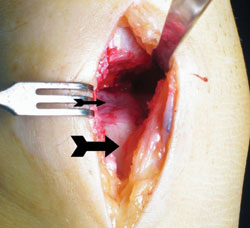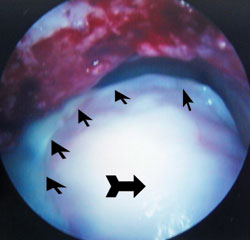MACI shows promising results as a salvage procedure for talar defects
Maximum benefit of matrix-induced autologous chondrocyte implantation was seen at 1 year.
|
|
VANCOUVER, British Columbia — Matrix-induced autologous chondrocyte implantation (MACI) may be an option for patients with full-thickness lesions of the talus who were unsuccessfully treated with curettage or microfracture, according to research conducted by American and Australian investigators.
“It is a good alternative for patients who fail microfracture and/or curettage,” Eric Giza, MD, said during his presentation at the 25th Annual Summer Meeting of the American Orthopaedic Foot and Ankle Society, here. “Most of the time you are not going to need a medial malleolar osteotomy. Obviously, it is not a first-line treatment option but a salvage procedure for larger lesions. So far, we have encouraging clinical results with the 2-year data, and we will be compiling our 5-year data next year.”
The study included 10 patients with osteochondral defects of the talus measuring greater than 1 cm2. The patients had an average of 1.7 procedures prior to the MACI and were followed for 2 years after the procedure.
The investigators discovered significant improvements from preoperative AOFAS hindfoot scores to 1-year postoperative scores, as well as from preoperative scores to 2-year postoperative scores. However, they found no significant improvement between the 1-year and 2-year scores.
“We believe that after the first year, this is the maximum benefit that the patient will achieve,” Giza said.
They also found similar patterns of significant improvement in the SF-36 scores for bodily pain and physical function.
All of the patients responded that they would have the surgery again. One patient experienced pain at 18 months, and a repeat MRI revealed a small fissure in the posterior half of the MACI graft area.
“This patient had a repeat arthroscopy and underwent a debridement and received microfracture,” Giza said. “This patient was included in our 2-year data that were presented here today.”
|
|
Images: Giza E |
Reference:
- Giza E, Ocel D, Lundeen GA, et al. Matrix-induced autologous chondrocyte implantation of the talus articular defects: Two-year prospective study. Presented at the 25th Annual Summer Meeting of the American Orthopaedic Foot and Ankle Society. July 15-18, 2009. Vancouver, British Columbia.



